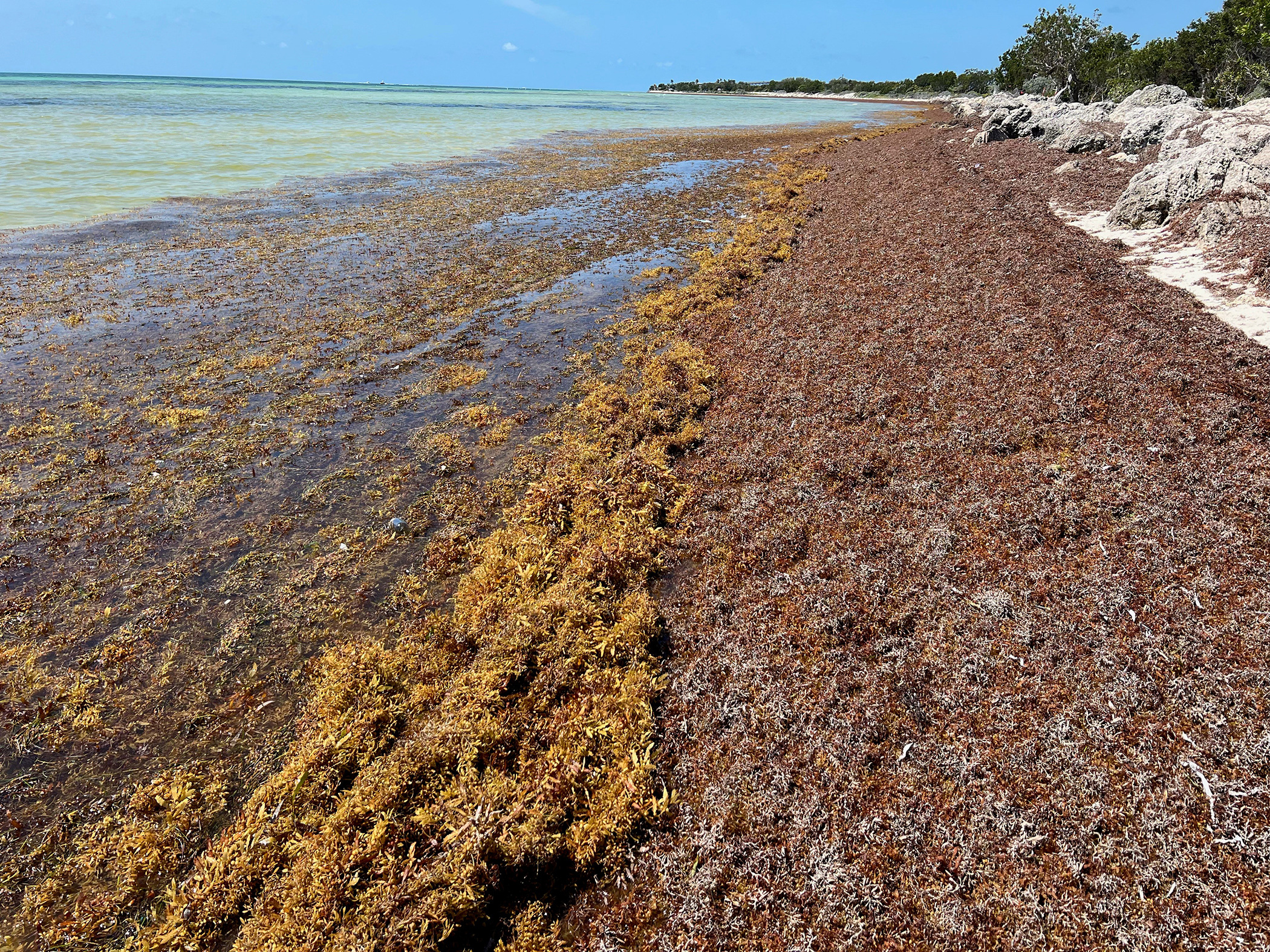
Weighing in at more 10 million tons and threatening marine life and the health of beach-goers, this year’s Sargassum — a specific type of seaweed — belt is breaking countless records and placing a potential damper on the upcoming tourism season.
Although accumulations of Sargassum dumped on coasts are typical for the summer season, this year’s bloom began forming in the Atlantic Ocean two months earlier than average and is expected to form even larger piles of rotting seaweed on beaches across the Atlantic Ocean and Gulf of Mexico. Some clusters have already landed in southern Florida, wreaking havoc from Miami to Fort Lauderdale.
Dr. Peter Morton, an associate research scientist in the Department of Oceanography in the College of Arts and Sciences at Texas A&M University and an active participant in Sargassum research, has been working tirelessly with a team of other scientists to understand why the Sargassum belt continues to grow year after year. In the process, Morton’s team has made groundbreaking discoveries, including the underlying cause for this abundant growth: a nutrient imbalance in the ocean.
“Every living thing is made up of carbon, nitrogen and phosphorus,” Morton said. “So, one of the things that you can study as far as the healthiness of an organism is if those ratios are in balance. What we’ve found is that the nitrogen to phosphorus ratio in recent years' Sargassum belt is more than what you would expect compared to 50 years ago.”
According to Morton’s research colleague, Dr. Brian LaPointe of Florida Atlantic University, the normal percentage of nitrogen in Sargassum has increased by 35%, while the levels of phosphorus have decreased by 42% in the last 30 years — both of which are causes for concern.
“What we suspect is happening is that there’s an additional source of nitrogen that’s being provided into the ocean, and it's enough to fuel the Sargassum to grow at even greater abundance and biomass,” Morton said.
Morton notes that the right amount of Sargassum is important for small organisms inhabiting the ocean because it provides protection from predators. However, with Sargassum piling up in such copious amounts, the cons heavily outweigh the pros, resulting in a detrimental effect on marine life.
“If the beach is covered with Sargassum, the sea turtles won’t have anywhere to come ashore and nest because they aren’t able to dig through the Sargassum to lay eggs in the sand,” Morton said. “So then, they’re trapped with nowhere to lay their eggs, which will lead to the sea turtle population declining.”
The massive amounts of Sargassum on the beach quickly become odorous like rotten eggs, causing possible health problems for those living and vacationing on the Atlantic coast this summer.
“When Sargassum degrades, it releases a lot of hydrogen sulfide, which is more than just unpleasant; it can make people sick,” Morton said. “If you have this constant release of decomposing material, it’s not only gross but could actually become a health threat.”
Because the research being done on Sargassum continues to reveal new information, Morton said the scientists’ understanding of it ebbs and flows. Researchers are doing what they can to target a specific problem to facilitate change, but what exactly does this mean in the long run? Morton explained that there is not one clear solution, adding that it could be years until the Sargassum levels are manageable.
“I think we have a pretty good idea in a general sense of what’s happening, but there is definitely more to be understood,” Morton said. “We have to figure out what’s actually driving it and then convince people to adopt different techniques. It will take a lot of steps to get there, and it’s complicated. It’s not just a Florida problem; it’s not just a Caribbean problem; it’s a problem impacting anyone who lives along the Atlantic Ocean.”
See related coverage from the Houston Chronicle and Houston NPR.

